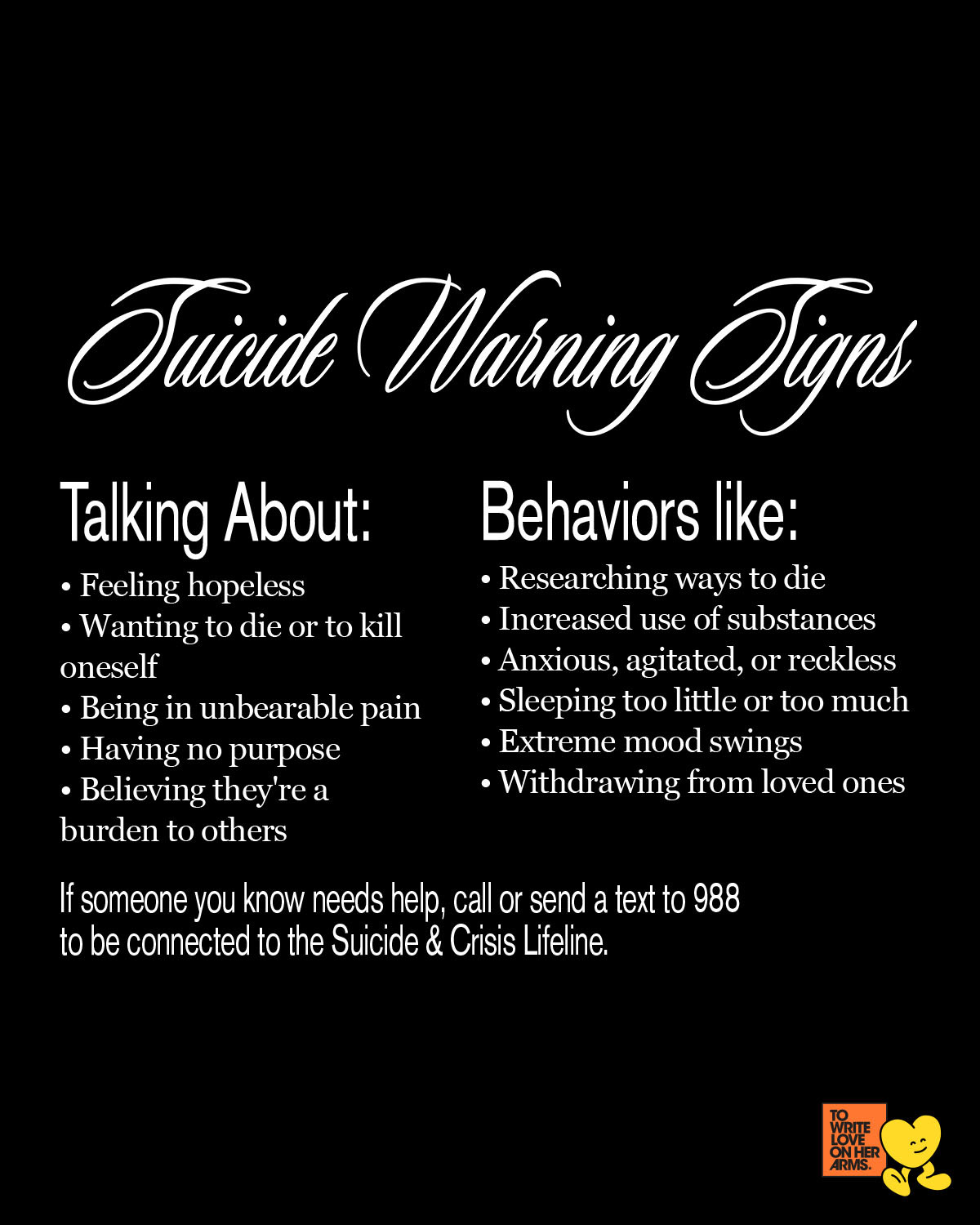We can push back against the myth that we don’t have a role to play in suicide prevention. While suicide is complex with no one solution, there are things we can do to help people stay. It starts with knowledge—with a better understanding of how someone can get to a moment of crisis, what to look for, and what to do when we recognize the signs of suicide.
Look for the signs.
What we’ve learned from our friends at the American Foundation for Suicide Prevention: No one takes their life for a single reason. Life stresses, combined with known risk factors, such as childhood trauma, substance use, or even chronic physical pain can contribute to someone taking their life. If these risk factors exist, it’s important to watch for suicide warning signs.

After familiarizing yourself with these warning signs, we encourage you to share this image on social media and in your community to help inform others.
Ask the questions.
Because of stigma, people may hide these signs, so it’s important to be proactive in talking about the possibility of someone considering suicide. Please know it’s OK to ask the question: “Are you thinking about suicide?” or “Are you thinking of hurting yourself?”
Asking this can feel uncomfortable and even a little scary, but being direct with the person you’re concerned about and listening to them is essential. You will not cause someone to start thinking about suicide simply by asking. On the contrary, by starting the conversation you’ll be making space for honesty, compassion, and the possibility of help to exist. If someone shares that they are considering suicide or have a plan, it’s important to reach out for help immediately—whether that involves going to the nearest mental health center or emergency room (if the situation requires this immediacy), or picking up the phone and calling the Suicide & Crisis Lifeline at 988.
